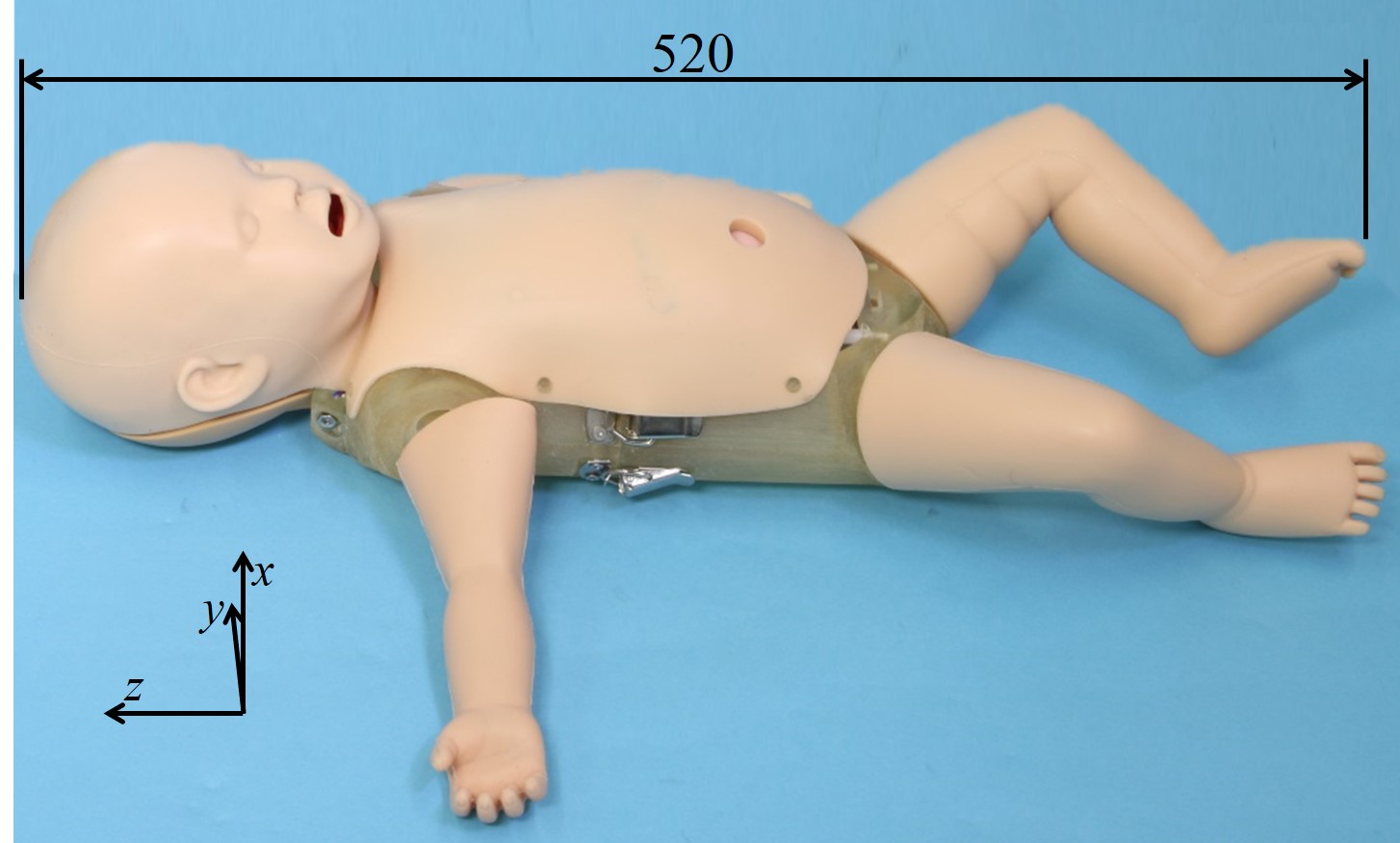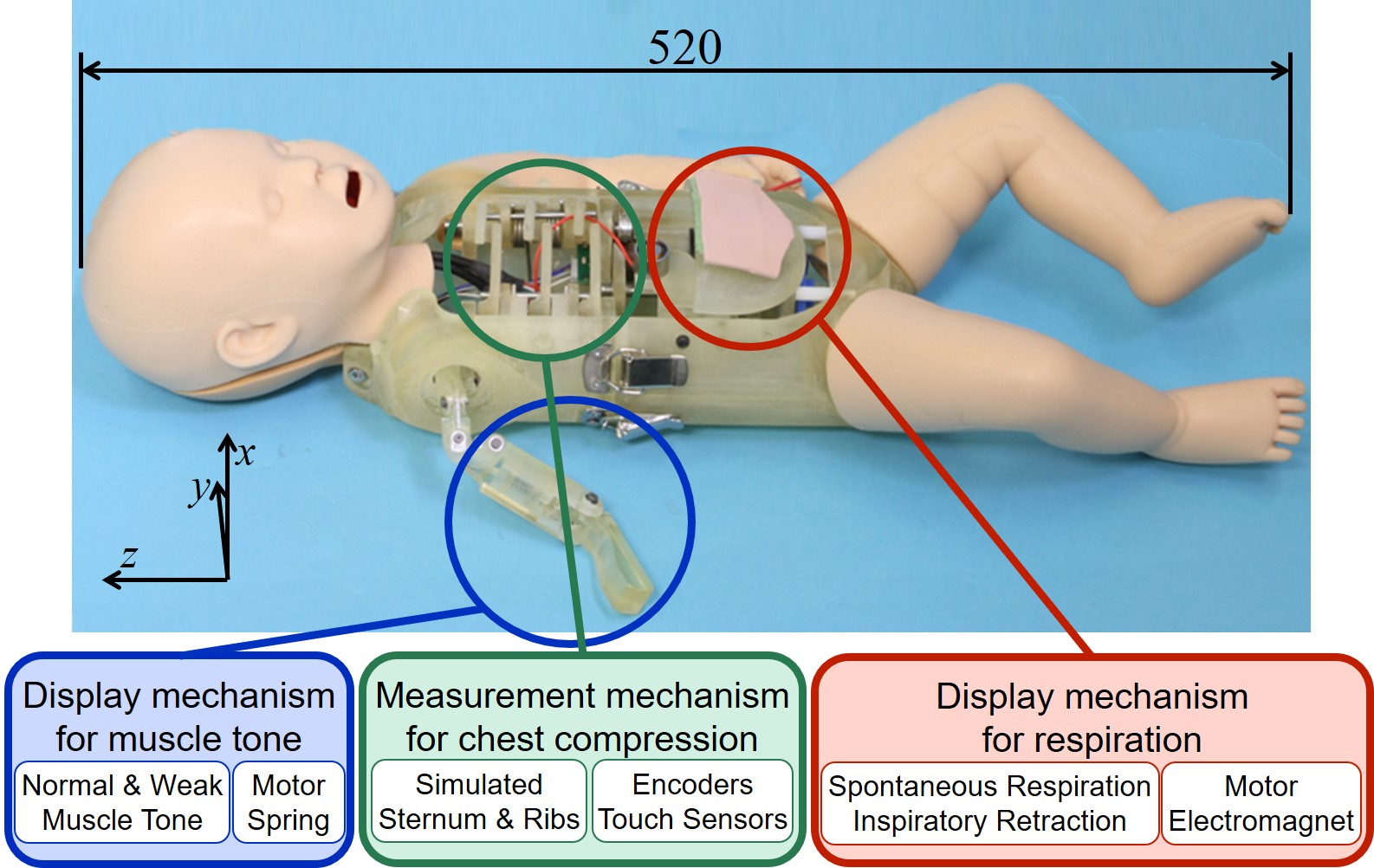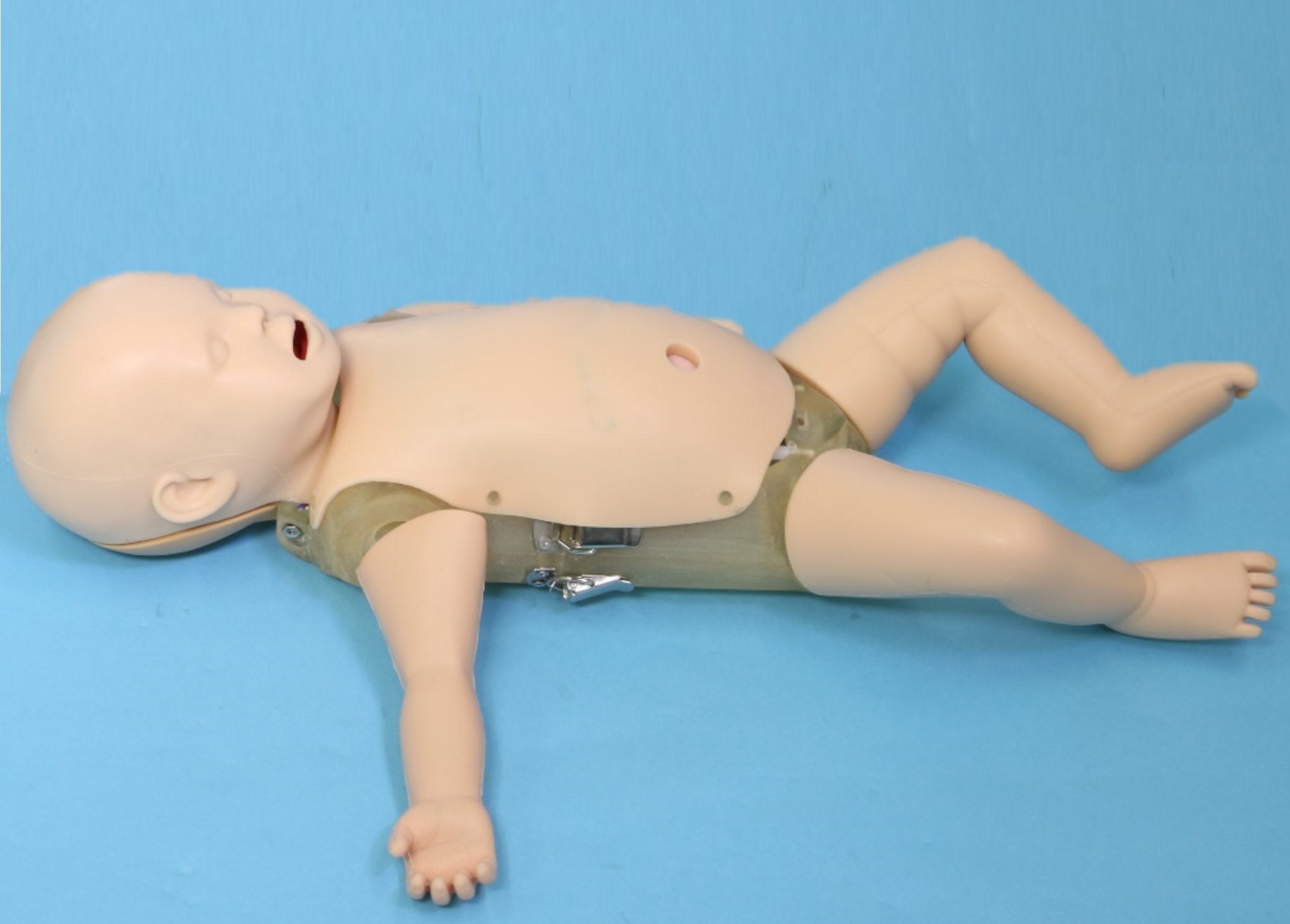Abstract
About 130000 newborns need some resuscitation every year in Japan. However, deliveries can happen in various
places; hospitals, obstetrics clinics and midwives’ houses, and the specialists can’t be there every time. For
this reason, it is important to provide training neonatal resuscitation to not only neonatologists but also all
medical workers such as obstetricians, midwives, and nurses. The Japanese Society for Perinatal and Neonatal
Medicine established the guideline in such cases; Neonatal Cardio-Pulmonary Resuscitation (NCPR). The training
courses are held to popularize NCPR. However, the training with manikin simulators has problems: Insufficiency
of reproduction of neonatal case, the large burden on the instructors and the low reality of the training.
The purpose of this research is Development of neonatal simulator that can reproduce NCPR cases and evaluate
technique. In 2020, we developed the neonatal resuscitation simulator WAKABA-5 (WAseda Kyotokagaku Airway
BAby-No.5) that can reproduce normal and weak muscle tone.

Fig.1 WAKABA-5
Internal Structure
WAKABA-5 imitates the average size of a healthy newborn likewise WAKABA-1 to 4, and its face and limbs are made
of flexible materials to give it a human-like appearance. In addition, the airway from the mouth to the lungs
was made from the flexible material, and it has a tongue, an epiglottis, and a branch to esophagus. These
flexible parts were produced by the joint research company, Kyoto Kagaku Co., Ltd.
WAKABA-5 is equipped with the display mechanism for muscle tone in addition to the measurement mechanism for
chest compression and the display mechanism for respiration installed in WAKABA-4. The display mechanism for
muscle tone can switch between weak muscle tone and normal muscle tone and can move both the shoulder mechanism
and elbow mechanism with a motor. This mechanism in weak muscle is undefined within movable range, and this
mechanism in normal muscle tone has W-M posture.

Fig.2 Internal structure
_en.jpg)
Fig.3 Display mechanism for muscle tone(shoulder mechanism)
_en.jpg)
Fig.4 Display mechanism for muscle tone(elbow mechanism)
This research was supported by the National Center for Child Health and Development.
Documents
Takaharu Kaizoji, Yasutaka Takebe, Syunya Ogawa, Keigo Momoi, Sugamiya Yurina, Tomonori Adachi, Atsuo
Takanishi, Hiroyuki Ishii:"Development of a Neonatal Resuscitation Training System -Design and Manufacture of a
Neonatal Simulator
Capable of Reproducing Change in Muscle Tone", The 39th Annual Conference of
the RSJ, 1B1-03, 2021.
(Awarded: The 3th Excellent Research and Technology Award)



_en.jpg)
_en.jpg)